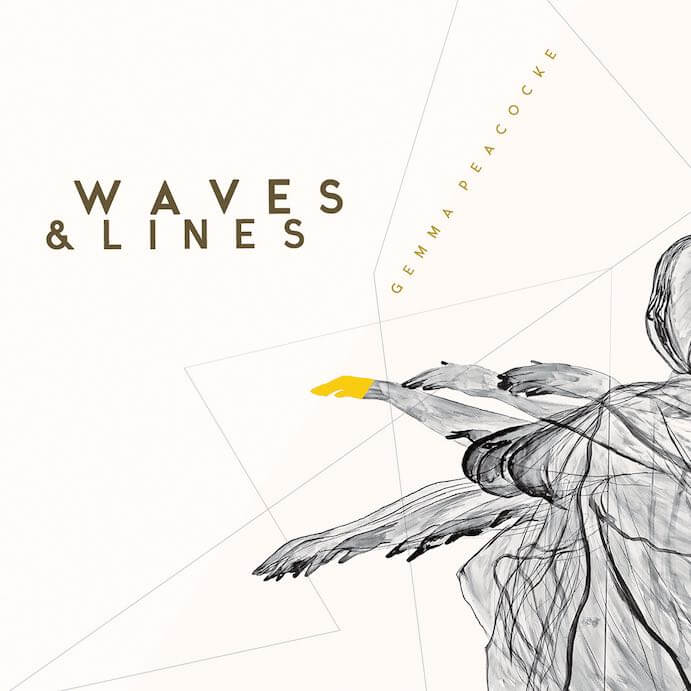The evocation of place is central in Gemma Peacocke’s Waves and Lines (New Amsterdam Records). Her newest album, a multimedia song cycle for soprano, electronics, and chamber ensemble, sets two-line folk poems (landays) written by women in contemporary Afghanistan. The landays, translated by Eliza Griswold, reflect on life in Afghanistan and the impact that nearly two decades of war with the United States have had on the nation.
War is not always directly discussed in the poems; some address love and sensuality:
“I could have tasted death for a taste of your tongue,
watching you eat ice cream when we were young.”
Others refer to social and economic struggles:
“In my dream I am the president.
When I awake, I am the beggar of the world.”
Regardless of their subject matter, Peacocke effectively sets each track in the broader context of a nation at war and evokes the oppression facing Afghan women. Oftentimes, it is Peacocke’s use of electronic components that sets the mood and creates vivid imagery in each piece. These sounds range greatly throughout Waves and Lines; sometimes heavy and reverberating, other times light and pingy. The ways that Peacocke chooses to place these elements within each piece allows them to serve as ominous reminders of the context within which these landays were written.

Gemma Peacocke
The first track, “Bees,” opens with a churning, buzzing sound; it is dark, saw-like. As these sounds begin to fade, the vocalist and instruments cut through the menacing texture to create a calm, floating sound. This gives the feeling that we are zooming in on one life, learning one woman’s story, rather than focusing on all the madness happening in the world (here represented by Peacocke’s non-acoustic soundscape).
In “I Am the Beggar of the World,” the reverse effect happens. In the middle of this track, the narrator is empowered, singing, “I am the president.” The drums are embattled, the piano pulsing its bass note, both creating an excited, frantic energy. And then, just before the four minute mark, the electronics reenter the texture. They feel foreboding, looming, dangerous. The triumphant and fast-paced vocal line falters, each word becoming weaker and more spaced apart. The text shifts: “I am the beggar of the world.” These mechanical sounds eventually take over the piece until we are left with only loud, zapping noises which entirely erase the the vocalist. The suffocation and oppressiveness of this moment feels particularly literal.
The short nature of the landays also lends itself beautifully to Peacocke’s compositional style; she is not confined to the poems’ form as she would be with lengthier texts, and is thus free to explore individual words within each landay through repetition and shifting textures. The best example of this is in “Separation.” For the first few minutes of the track, we hear the repetition of “you set fire,” “separation,” and “blisters blossom on my heart,” which are set in a ballad-like manner. These lyrics feel as if they could belong in any love song, evoking struggle within a relationship as many pop songs on the radio would. It is not until the last minute or so of the piece that Peacocke reveals the most critical element of the story: “Because my love’s American, blisters blossom on my heart.”

Eliza Bagg
This revelation is heart-wrenching, especially due to its beautiful, simple melody, sung by Eliza Bagg (soprano). Throughout Waves and Lines, Bagg navigates a vast array of vocal styles flawlessly. In “Love,” she brings a soft, almost choral sound; in “Ice Cream,” her voice is hazy and sultry; in “Father” she eases through goat trills and vocal fry naturally. And at the end of “Separation,” she sings the landay’s distinguishing line with a light smokiness that gives it a tragic earnestness. By waiting until the very end of the piece to present this last line, Peacocke gets us comfortable in the musical texture before disclosing the element that throws us right back in to the poet’s difficult reality.
Through her use of electronics and effective text setting, Peacocke is able to stretch each short, two-line poem into a several minute-long sound painting; through her varying use of each word in the poem in different melodies and textures, she delivers her interpretation of the multi-layered emotions present in these women’s stories. Amidst the destruction and terror that war brings, life went on for these women. They still wrote these landays about their struggles, about their crushes, and about unrequited love. By creating ebbs and flows between tension and relief, peace and chaos, Peacocke is able to explore the dualities of living in a nation at war.






















